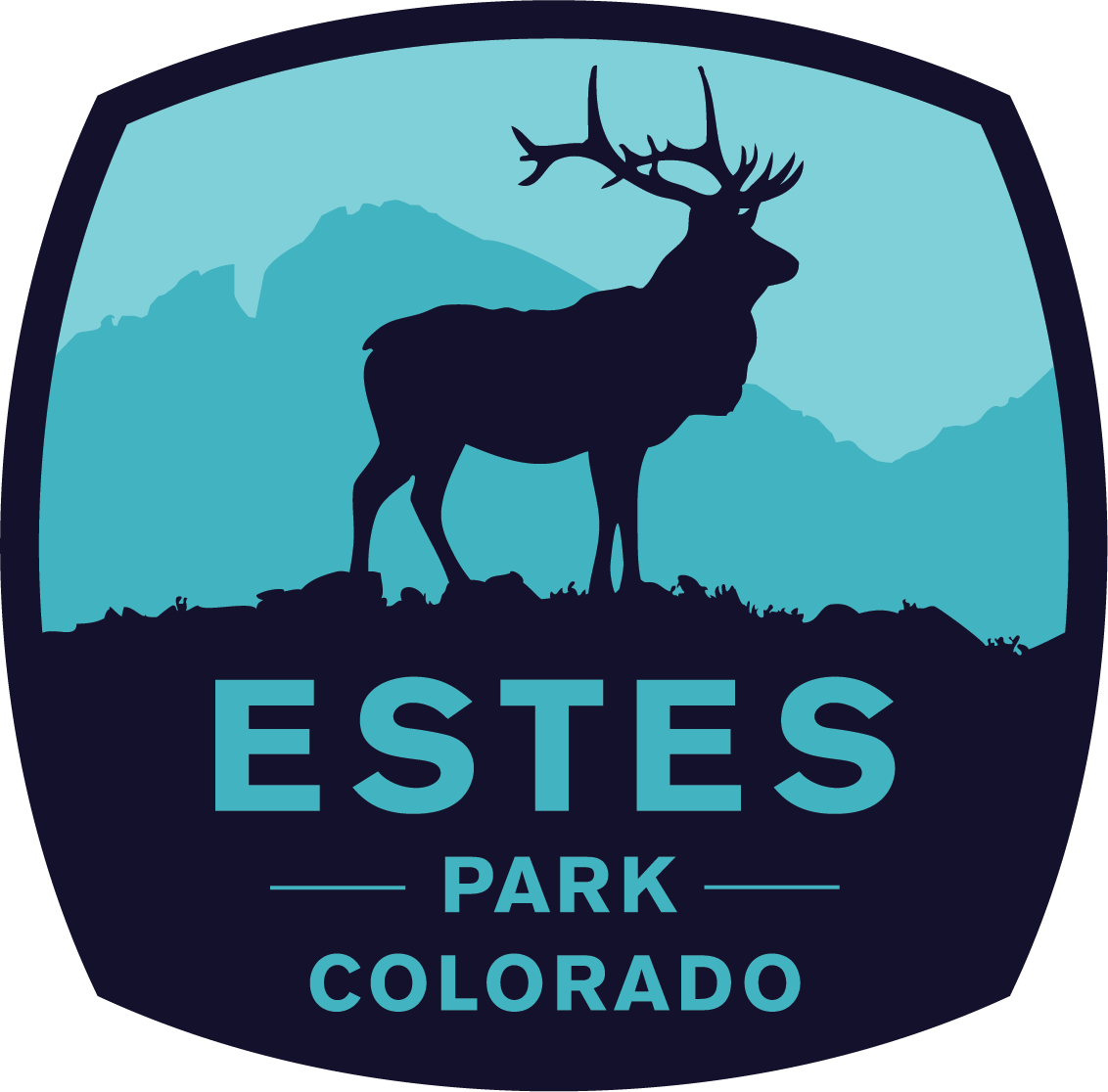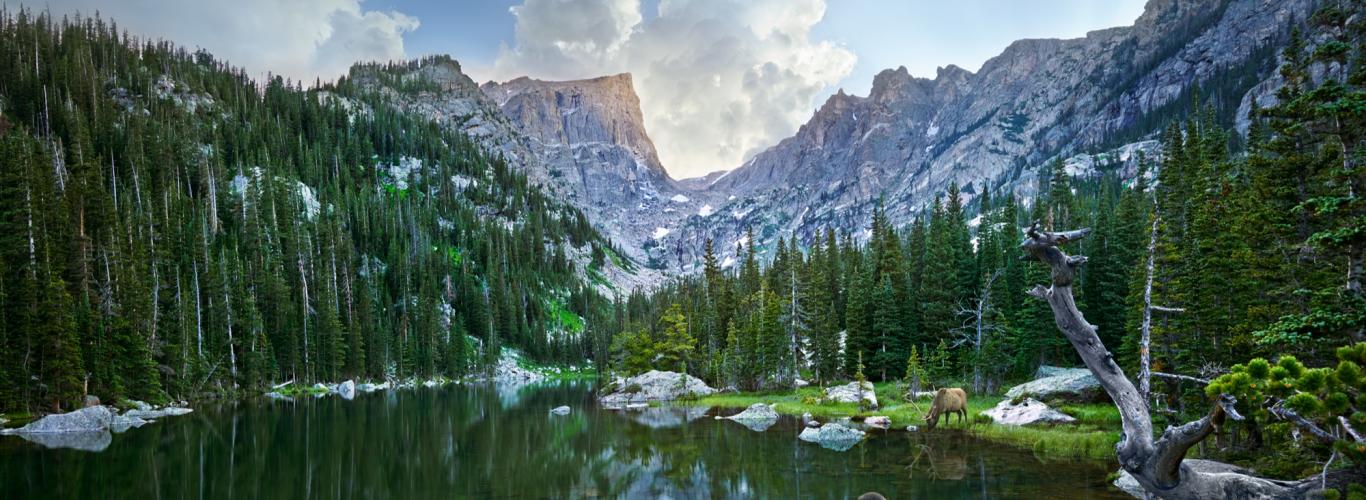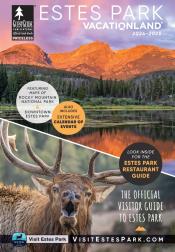With summer approaching, many visitors will make the trek up to one of Rocky Mountain National Park's most iconic vistas; Bear Lake. The Rocky Mountain Conservancy writes about the geology, biology and history that make Bear Lake a destination worth visiting again and again:
Seventy-two peaks over 12,000 feet, 150 glacial lakes, and 359 miles of hiking trails stand awaiting the arrival of summer guests in Rocky Mountain National Park. But what is the allure of Bear Lake? What could this destination have to offer the new visitor and the seasoned hiker alike? Here are a few tidbits regarding the natural and cultural history of this high-altitude beauty. Lace up your boots and journey with us, and then go see for yourself.
What am I looking at? On a clear day, 12,713-foot Hallet Peak stands guard directly above Bear Lake and the iconic diamond face of 14,259-foot Longs' Peak stands to the east, but these mountains are only two pieces of evidence of a larger geologic story featured here. Boulders banded with light and dark materials show evidence of prehistoric oceanic sediment hardening into sedimentary rocks before excess heat and pressure from the earth's crust transformed them into metamorphic rocks. Magma forming igneous intrusions appeared later, causing many of the boulders surrounding Bear Lake to morph into the granite reminiscent of your kitchen counter. Upon lifting your eyes to the rocks above, you will notice several V- and U-shaped canyons along the sides of high peaks-evidence of glacial plucking and scouring. Of the five active glaciers in Rocky Mountain National Park, Tyndall Glacier sits high on the Hallet-Flattop Ridge, offering a year-round invitation to a high-country glissading or skiing adventure to those prepared. Starting on the right side of Bear Lake and following signs to 4.4 miles up to Flattop Mountain provides a challenging adventure to those up for the climb; the lion-hearted may even continue across the tundra to summit Hallet, Otis, and Taylor Peaks, provided an early start is had.
What calls this place home? Perched at 9,475 feet, Bear Lake sits squarely in the dynamic sub-alpine ecosystem, where it is essential for plants and animals to have a unique set of adaptations to survive. Evidence of rock-loving chipmunks and Golden-Mantled Ground Squirrels is showcased by piles of pinecones bracks, or middens, underneath stately Ponderosa pines and orange lichen, which only grows when nitrate-rich animal waste is present. Numerous bird species dot the skies in all seasons here-think Chickadee, Stellar's Jay, and Clark's Nutcracker. Early in the summer, the red bellies of male greenback Cutthroat trout dot Glacier Creek as they travel upstream from Bear Lake to spawn. Rocky Mountain National Park seeks to protect the natural processes of animal and plant life, and it starts with you: please do not feed the animals or fish or swim in Bear Lake.
Will I see a bear? Sally Ferguson recalls her grandfather taking an ill-aimed shot at a bear when he came to Bear Lake to hunt deer and elk in 1912, thus earning the destination its name. However, grizzlies were hunted to extinction in the early 1900's and there are less than 30 of their milder-mannered cousin species, the Black Bear, in RMNP today. The amount of people circulating through Bear Lake is likely to deter these shy creatures from paying a visit. Still, people are a more preferred deterrent than a power plant-were it not for the advocacy of Enos Mills, Bear Lake might be buttressed with an earthen dam 30 feet high and 600 feet long, connecting it to nearby Bierstadt Lake, Mills Lake, and Loch Vale.
Stepping into Bear Lake is participating in a story that will span much longer than this lifetime. This area has seen Native Americans begin many of the trails we use today to hunt deer and elk. It has seen settlers picnic and attend camp. It has seen glaciers carve out impressive cirques and other snow-catching features. And yet, its easy access to upwards of 20 glorious hiking destinations still bid us to come and explore in the rhythm of the wild.
If you are interested in exploring RMNP and gaining more information about ecological relationships within it under the guidance of a naturalist, Rocky Mountain Conservancy offers Field Institute and Educational Adventures. Register online at rmconservancy.org or call (970) 586 0108 for more information or to plan a custom adventure.
By: Kara Wadenstierna, Olson Fellow at Rocky Mountain Conservancy- Field Institute




